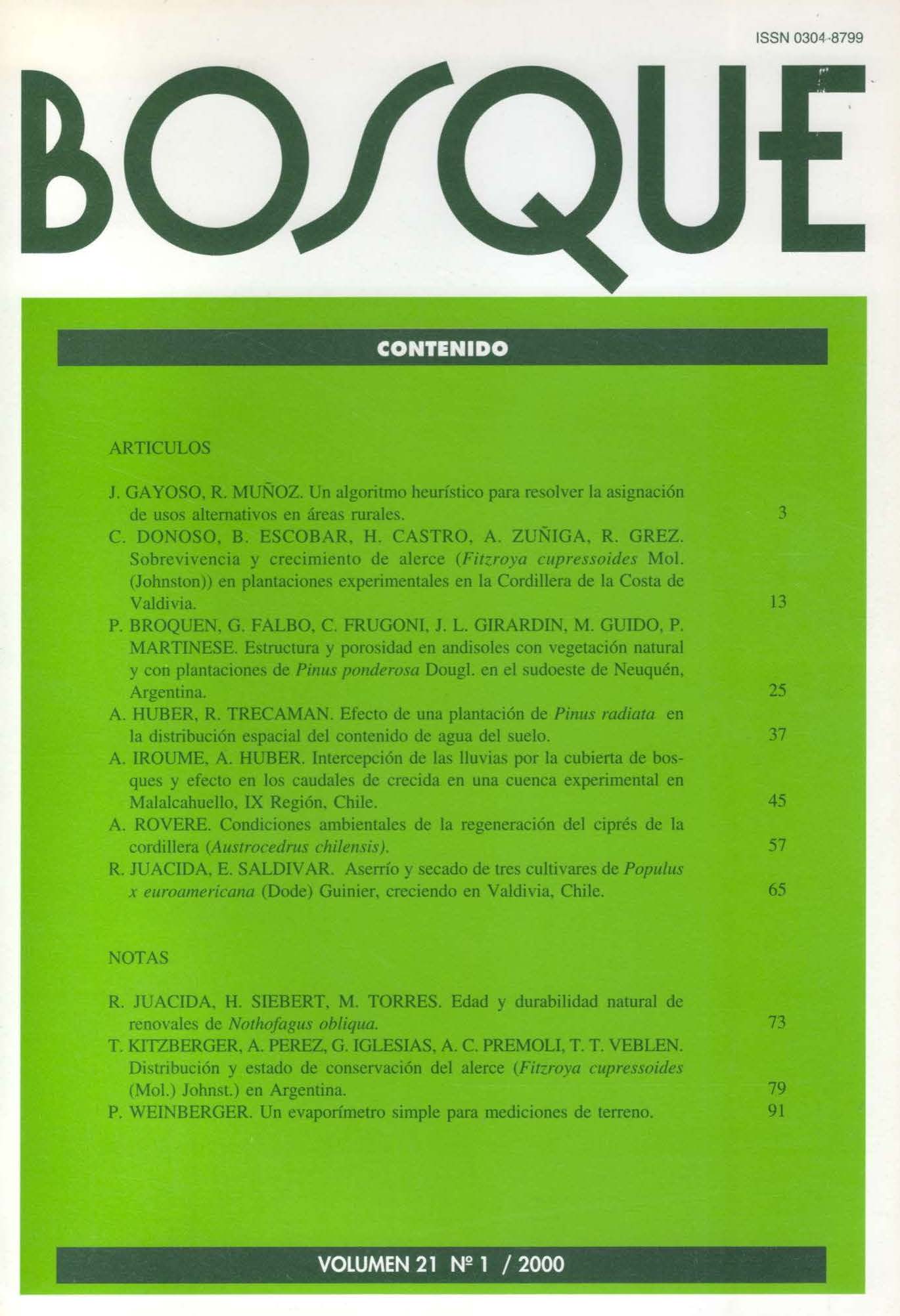Main Article Content
Jun 30, 2000
Abstract
To solve territorial arrangement and alternative land use allocation, a heuristic algorithm was used The study area included 2216 hectares located in the Andes range, Panguipulli, 10th Region, Chile To solve the problem, a links and nodes network was established. The nodes represented multiple products from different productive units, time periods and destinations. The links represented fixed and variable transportation and operational costs and investments and unit revenues from each alternative use. The analysis considered the following alternative uses, wood products from native forests, non-use value of native forests as carbon stock and conservation or existence value. Cattle, crop farming and Pseudotsuga menziesii plantations are considered for areas without vegetation or covered with bushes. The solution chooses the most efficient use, the path and the destination for multiple time periods maximizing the net present value. Native forest areas allocate productive forest use when the wood net benefits exceed the net present value as carbon stock. The current areas without forests are recommended as cattle and Pseudotsuga menziesii plantations over wheat cultures depending on terrain condition. This work proves that the methodological tool proposed, selects uses to maximize the total net present profits, reaching an efficient solution that could be extended to solve similar or more complex problems which include different uses and wider territorial areas.


